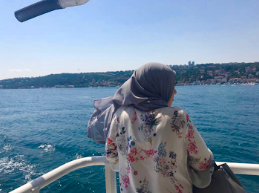Ray Bradbury's
There Will Come Soft Rains is a story of opposition and irony. The tragedy resulting in the homeowners' deaths is both horrifying and sad. The ambiance of the empty house is both peaceful and haunting. The reader can honestly choose which way to perceive the tragedy; without doubt there exist innumerable, starkly contrasting interpretations of Bradbury's writing.
We discussed in class how one of the conflicts in the short story is Man v.s. Nature.
One way in which the story includes irony is in the state of nature in the story itself, as opposed to the state of nature in Sarah Teasdale's poem. The first sentence of the poem on page 326 provides us a serene image of nature in a world where humans no longer exist.
"There will come soft rains and the smell of the ground,
And swallows circling with their shimmering sound" ...
She goes on to describe "frogs in the pools singing at night" and birds "whistling their wims on a low fence-wire". Clearly, the poem is meant to give its reader a relaxing feeling, with the nature depicted as being in a state of peace and tranquility, in spite of being left alone in the world after the demise of all of mankind.
However, the world in which the house exists is the total opposite. The surroundings of the lonely home are completely destroyed, with not a single living thing in sight. Even most of the animals have been killed by the radiation, as opposed to the poem where animals supposedly continue to live and prosper following the total absence of humans.
Ironically, it is not the natural elements that continue to exist, but the man-made technology and machinery left behind. On page 324, Bradbury says:
"Until this day, how well the house had kept its peace. "Who goes
there? What's the password?" and, getting no answer...".
This sentence honestly stood out to me the most. Despite its simplicity, it does a powerful job of giving a sad and haunting image of a home left behind by its inhabitants. The true eeriness of the story lies in the fact that these machines continue to operate and "speak" as they've been programmed to do, despite no one being there.
In my opinion, the irony of the state of nature in the story is meant to relay a message. Teasdale's piece depicts an auspicious, albeit unrealistic view of the future that many may subconsciously have. Perhaps Bradbury wants to warn us about what really might happen to our planet. With the rise of innovative technologies and inventions, there is a possibility these human creations might outlive humans themselves.













